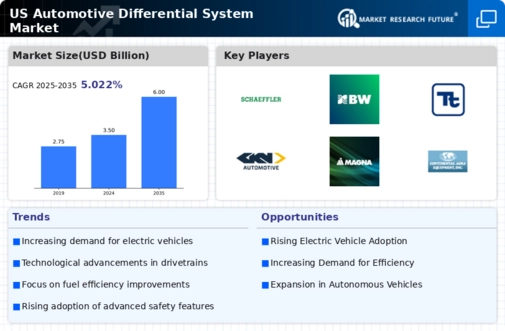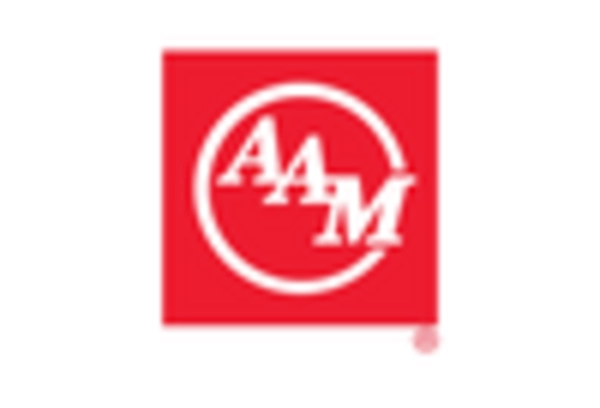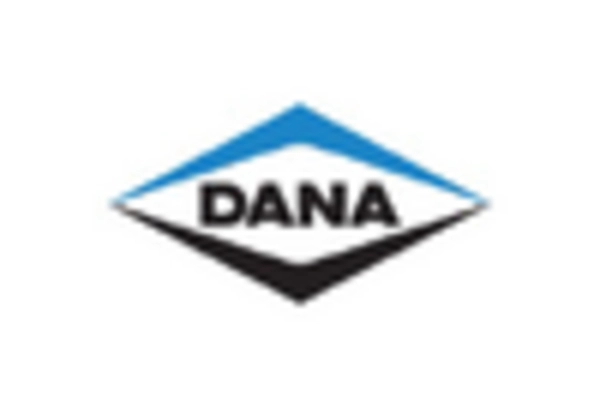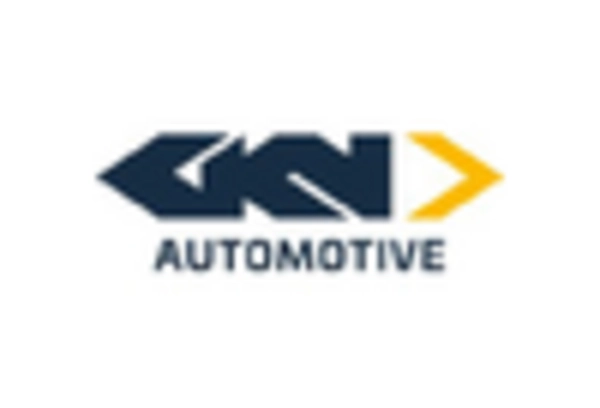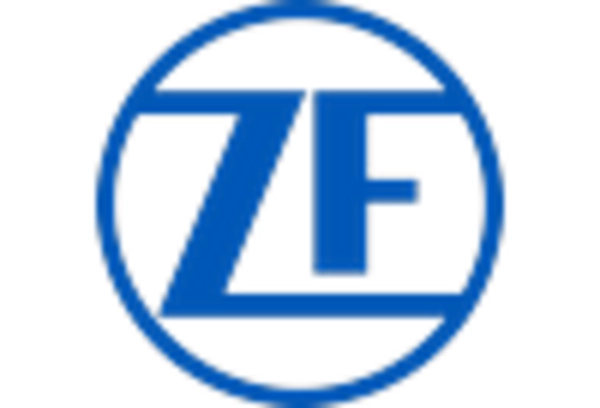Increased Focus on Fuel Efficiency
In the US Automotive Differential System Market, the emphasis on fuel efficiency is becoming increasingly pronounced. With rising fuel prices and stringent government regulations aimed at reducing carbon emissions, automotive manufacturers are compelled to enhance the efficiency of their vehicles. Differential systems play a crucial role in optimizing power distribution and improving fuel economy. Data suggests that vehicles equipped with advanced differential systems can achieve up to 10% better fuel efficiency compared to those with conventional systems. This growing focus on fuel efficiency is likely to drive innovation within the differential system sector, as manufacturers seek to develop lighter, more efficient designs that align with consumer expectations and regulatory requirements.
Growing Demand for Electric Vehicles
The US Automotive Differential System Market is experiencing a notable shift towards electric vehicles (EVs), driven by increasing consumer awareness of environmental issues and government incentives. As EV adoption rises, the demand for specialized differential systems that can handle the unique torque characteristics of electric motors is expected to grow. According to recent data, the EV market in the US is projected to reach over 25 million units by 2030, which will significantly impact the differential system requirements. Manufacturers are likely to innovate and adapt their products to meet the specific needs of electric drivetrains, thereby enhancing performance and efficiency. This trend indicates a transformative phase for the US Automotive Differential System Market, as traditional systems may need to evolve or be replaced to accommodate the growing fleet of electric vehicles.
Regulatory Compliance and Safety Standards
The US Automotive Differential System Market is significantly influenced by regulatory compliance and safety standards. Government agencies, such as the National Highway Traffic Safety Administration (NHTSA), impose stringent regulations on vehicle safety and performance. These regulations often necessitate the incorporation of advanced differential systems that enhance vehicle stability and control. As safety becomes a paramount concern for consumers, manufacturers are increasingly investing in research and development to ensure their differential systems meet or exceed these standards. This focus on compliance not only drives innovation but also creates opportunities for companies that can provide cutting-edge solutions that align with regulatory requirements, thereby shaping the future of the US Automotive Differential System Market.
Rising Popularity of All-Wheel Drive Systems
The US Automotive Differential System Market is experiencing a surge in the popularity of all-wheel drive (AWD) systems, driven by consumer preferences for enhanced traction and stability. As more consumers seek vehicles capable of performing well in diverse driving conditions, manufacturers are responding by integrating advanced differential systems that support AWD functionality. Data indicates that the market for AWD vehicles is expected to grow at a compound annual growth rate (CAGR) of over 5% through the next decade. This trend is likely to stimulate demand for innovative differential solutions that can effectively manage power distribution across all wheels, thereby improving vehicle performance and safety. Consequently, the rising popularity of AWD systems is poised to significantly influence the dynamics of the US Automotive Differential System Market.
Technological Advancements in Differential Systems
The US Automotive Differential System Market is witnessing rapid technological advancements that are reshaping the landscape of vehicle performance. Innovations such as electronically controlled differentials and adaptive torque vectoring systems are gaining traction among manufacturers. These technologies enhance vehicle handling, stability, and overall driving experience. For instance, the integration of smart differentials that can adjust torque distribution in real-time is becoming more prevalent. This trend is supported by the increasing demand for high-performance vehicles, which often require sophisticated differential systems to optimize power delivery. As these technologies continue to evolve, they are likely to play a pivotal role in the competitive dynamics of the US Automotive Differential System Market.


